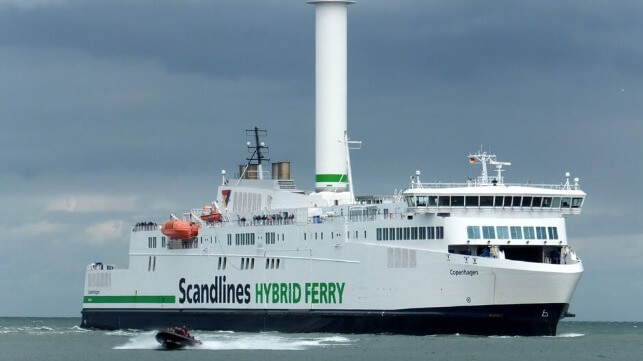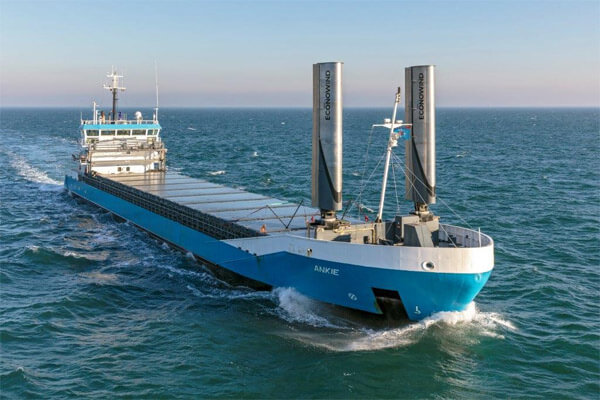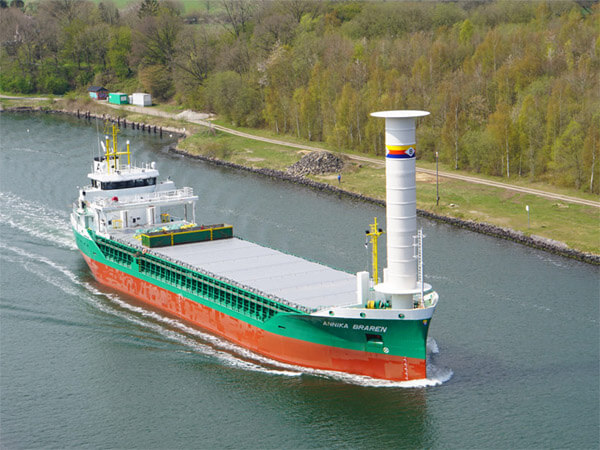Wind-Assisted Propulsion Study Completed After Five Demonstrations

A three-and-a-half-year program to test and demonstrate a range of technologies in wind-assisted propulsion has come to a close with organizers reporting that they believe it will provide critical information to assist the shipping industry in adopting the technologies. The WASP Project (Wind Assisted Ship Propulsion) was funded by the European Regional Development Fund providing a focus for research, academic study, and the testing and installation of wind-assisted propulsion on ships operating in the North Sea region.
Reporting on the conclusion of the project, the organizers are saying that it generated a significant stream of information and transparency around wind propulsion technology selection, installation and operation, that will contribute to the general development of the wind-assist sector. Three different wind propulsion technologies were tested with a total of five commercial vessels retrofitted with wind-assist systems. Third party validation was also conducted to verify the actual fuel savings achieved.
The researchers and installations focused on three technologies. They installed Flettner-style rotors in two of the projects. In addition, they also tested both retractable and foldable suction wings as well as a wingsail. Most of the vessels were smaller coastal ships ranging in size from 1,600 dwt to 3,600 dwt as well as a larger 6,500 cargo ship.

The largest ship in the program was the 23,000 gross ton Copenhagen, a Ro-Ro ferry operated by Scandlines that was an early test of the rotor technology. The other ships were the Annika Braren which also tested a rotor. Three ships, the Ankie, the Frisian Sea, and the Tharsis each tested different rigid wings.
The report highlights that they were able to deliver up to 10 percent fuel savings. As expected, the fuel savings from these systems was variable, in part depending on the route and vessel’s operating profile. The organizers, however, believe the five installations of wind propulsion technology will continue to serve as examples of how wind propulsion systems can be deployed as retrofits on different vessels. These installations also contributed to the generation of three points of reference for different wind propulsion technologies and shipping segments that will support ship owners to make investment decisions going forward.
The project will continue to have an influence on the development and application of the technology. Organizers report that the project played a key role in developing standard procedures for sea trials for wind propulsion technology-equipped vessels. The organizers said that these are significant developments that will reduce the barriers for the uptake of wind propulsion solutions.

In summarizing the results of the project they believe it generated significant learnings, deliverables, and has contributed to the general development of the wind-assist sector. By demonstrating the performance of several wind propulsion technologies in real-life operations, they believe the project contributed to building trust in the technology and this will hopefully convince more ship owners to invest in this green technology.
The developed sea trial methods and key performance indicators will be translated into ITTC Guidelines, which will be published in 2024. The data will also be maintained as a reference for future efforts and they also point to spin-off projects. Project partners from the WASP study, Rörd Braren and ECOFlettner, announced they will be working with MARIKO, the maritime competence center in Germany, and other project partners to further optimize the ECO Flettner rotor technology and widen the testing of the rotor systems on different ship types.
No comments:
Post a Comment